Written by:Drs. Robert C. Waddell, Glenn Q. Lefler, P. Scott Smith, and Doug Davis
Beginnings to 1950 By Dr. Robert Waddell
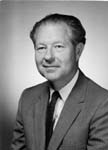
I was asked to write a brief history of Physics at Eastern. I am perhaps uniquely qualified to do this as I have known, with the exception of Dr. Pierce who was here during World War II, all of the teachers of Physics here at EIU since the turn of the century. This nearly 100 year history of Physics at Eastern will be divided, with my covering to 1950, Glenn Lefler, his years as department head (1950-1970), Scott Smith covering most of 1970-1990, and with Doug Davis bringing us to the present. Of course, there will be some overlap.
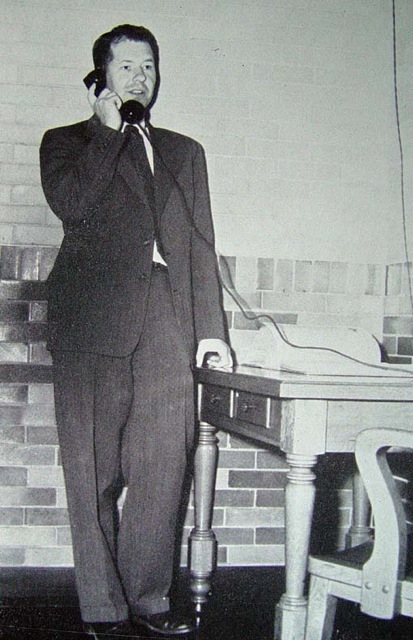
I came to Eastern Illinois State Teachers College as a freshman in the fall of 1938 and finished teaching my last class here in June 1987. J. Paul Goode, a geographer, first taught Physics at the Normal School. Physics was required of all in the four-year program. One of my Chemistry teachers in 1938 was A. B. Crowe. It is my understanding that he gave course offerings in Physics after arriving in 1904.
The first Physics teacher who was primarily trained as a Physics teacher was Ora Railsback who came here in 1924, developed a program, and became head of the Physics Department. As an aside, Ora, a musician, told me he founded Eastern’s first marching band.
Physics graduates of the 1930’s that come to mind include Harold (Doc) Marker who after graduate work at the University of Illinois returned to Eastern to teach Math. Also, Norman Strader, after University of Illinois graduate study, taught Physics here before leaving Eastern to teach Physics and radio for many years at Charleston High School.
In 1938 Physics was taught in a single room located on the second floor of the west corridor of Old Main. Lab tables were at the rear of the room, student desks at the front, and the cloak room behind the blackboard was used for apparatus storage. The word “Physics” was etched in the glass of the entrance door.
Following the death of Mr. Lord, Dr. Robert Guy Buzzard became Eastern’s president in 1934. One of his goals was to increase the number of faculty with advanced degrees. Under that pressure Ora Railsback took leave to complete his doctorate in Physics at the University of Indiana. It was there that he met fellow graduate student Glenn Lefler. Ora’s replacement during that period was Dr. 
Frank Verwiebe who stayedon following the return of Dr. Ora Railsback. I studied under both.
The new Science Building was opened in 1939. We students moved apparatus to our wonderful new facilities. Physics had the north portion of the first and second floors. Chemistry had the fourth floor. Botany, Zoology (Biology was not offered), Hygiene and Geography shared the remainder of the Science Building.
When Dr. Verwiebe took a leave of absence his position was filled by Dick Watson. Later Dr. Watson, after years as a physicist at Westinghouse, became a professor of Physics at Southern Illinois University, Carbondale.
During World War II Ora enlisted in the Army and Frank left for war-related industry. Eastern’s enrollment dropped from a pre-war 1,000 or so down to about 350. A Dr. Pierce was the only Physics teacher during this period. After serving in the U. S. Navy, I came back to enroll as a senior for the spring quarter of 1946. Ora had just returned. Many other GIs were returning to school and Ora needed help. I was asked to teach some of the General Physics labs while Ora did lectures. Another student, Florence Rice, also helped with this, while student Roy Miller worked with apparatus and lab set ups. We got by and even today I am approached by some old GIs who were in one of those post-war classes. During the summer of 1946 Ora contacted his former classmate Glenn Lefler who was teaching at Kent State in Ohio. We at Eastern were fortunate; Dr. Lefler came to Eastern in the fall of 1946. I continued teaching labs until my graduation in 1947.
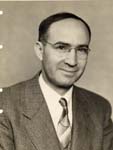
Ora Railsback’s PhD research was in Music Physics. For this he invented an instrument to rapidly measure frequency with great precision – the chromatic stroboscope known commercially as the StroboConn. We still have that first model on a storage shelf in the department. Ora also established our course in Music Physics that was required of Music majors for many years. It continues as Physics of Sound and Music for Music and Speech-Pathology majors. Interestingly, several in the Physics Department over the years have been musicians. Perhaps there is some special relationship between Physics and Music.
In 1947 I graduated, then completed an MS in Physics at the University of Illinois. In the spring of 1948 Ora asked me, by phone, to come back to Eastern as an instructor in Physics. No committee deliberations were involved. It took me about five minutes of thought to say yes – a decision I have never regretted.
I joined the Physics Department as an instructor in the fall of 1948. Ora Railsback and Glenn Lefler had previously added Norm Strader so we now were a four-person department. Soon after this a Mr. Gordon Martin came for a while. We developed a strong program in Physics – especially in Physics education which enhanced the department’s recognition. Ora was elected president of the Illinois Section of the American Association of Physics Teachers (AAPT). Glenn was subsequently president of the Illinois Section and I later filled that position as did Bill Butler. Eastern was making its mark as a good undergraduate school.
With this recognition came offers for other jobs. In 1950 Ora accepted the position as Head of the Physics Department at the Navy Pier branch of the University of Illinois which became the University of Illinois at Chicago. Irvin Sparks, then completing a PhD at the University of Missouri, was hired to start in the fall of 1950. But Murphy’s Law triumphed. Irv literally dropped a wrench in his vacuum glassware and consequently did not arrive as Dr. Sparks until January, 1951. He did arrange for a fellow graduate student, Jim McQuitty, to fill in for him here
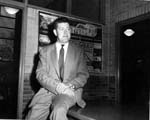 .
.
Glen Lefler was appointed Head of the Physics Department in 1950. At that time there was no faculty participation in administration. The President, perhaps after informal consultations, made all such decisions. The first faculty organization, the Committee of Fifteen, later the Faculty Senate, came a year or two later.
From 1950 to 1970 By Dr. Glenn Q. Lefler
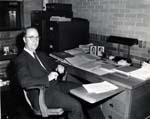
I have always been proud of Eastern Illinois University, the Physics Department, and its students.
When Dr. Ora Railsback accepted the position as Head of the Physics Department at the Navy Pier branch of the University of Illinois, I was made Head of the Physics Department at Eastern, fall term 1950. Robert C. Waddell and Gordon M. Martin were members of the Physics Department. Irvin L. Sparks, completing his degree in Physics at the University of Missouri, was hired for the new term 1950-51. However, a delay in his research postponed his coming to Eastern for six months during which time James McQuitty from the University of Missouri came as a substitute. Dr. Sparks came to us fresh from graduate school with a PhD which was then five days old.
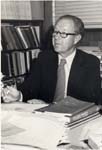
Mr. Martin left for a Government position. Robert Waddell took a leave of absence in 1954 to complete his graduate work for the PhD in Physics at Iowa State University, and Dr. P. Scott Smith (PhD Cornell University) came as an excellent addition to the staff. We were pleased when Dr. Waddell returned in 1957 with his PhD in Physics. The Department now consisted of Lefler, Sparks, Waddell, and Smith with Arnold J. Hoffman (MS University of Illinois) who did an excellent service as one-third time in the Department in charge of Practice Teaching and the Methods courses for the BS in Education students. In 1959 L. Ralph Gibson (BS Eastern) came in as the Department’s first Faculty Assistant in charge of the shop, laboratory, and equipment responsibilities – his work was greatly appreciated by the staff.
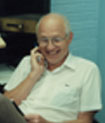

The College enrollment was growing rapidly at this time and Snowden L. Eisenhour, completing his degree at the University of Illinois, was hired for the new year 1961-62. A delay in his research postponed his coming, but we were pleased to welcome him for the spring term with his PhD work completed. We were happy when Dr. William M. Cloud (PhD University of Wisconsin) came from Kansas State Teachers College to join our staff in 1962 and Marvin L. Breig (PhD University of Oklahoma) joined in 1963. In 1964 Ralph Gibson left for graduate work at Ohio University and Stuart Y. Keller (MS Eastern) came as his replacement as Instructor in charge of shop, laboratory, and equipment, and teaching one class – very innovative on the job. Duane Fowler joined the faculty in 1965 and went on to graduate school at Purdue University in 1967. We were pleased to have Henry Taitt (MS University of Delaware) come to the staff in 1965, and Dr. Edwin A. Whalin (PhD University of Illinois) in 1966.
Members of the Physics Department were sorely grieved at the loss of our good friend and colleague Dr. Irvin L. Sparks when, after a bout with cancer, he died in 1965. The Physics staff and students established a scholarship in Dr. Spark’s honor.
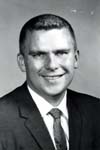
Stuart Keller left in the summer of 1967 for a junior college teaching position and Charles E. Miller, Jr. (MS Eastern) ably assumed the shop, laboratory, and equipment position and was in charge of the student assistants of the Department.
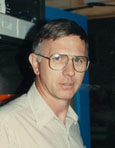

We were pleased to have Paul Ruddle (MS Purdue University) join the teaching staff in 1967, also Maurice Shepherd (MAT Indiana University) one-third time, as supervisor of the practice teaching program when Arnold J. Hoffman transferred to full-time teaching in the Chemistry Department. Ralph Gibson, with his degree work at Ohio University partially completed, returned to the Eastern teaching staff in 1969. Doug Davis (PhD UCLA) was employed to start work in the fall term 1970.
The aim of the Department was to prepare students to excel in whatever they chose to do. We developed new courses and extended our offerings as new fields appeared on the horizon. We encouraged the students to develop as far as they could, as far as their ability and ambition would carry them. Each was encouraged to have the ambition to coincide with his/her ability, and to go the limit. While continuing to solve the needs of secondary school science teachers, we put more emphasis on the development of a complete Physics program which would prepare the students who were qualified to go on to graduate school in Physics, thus providing the basic preparation for present or future employment in all areas – high school, junior college, college or university, industry, research and development or other. During these years the number of Physics majors varied from year to year, and was twenty-six at the maximum. With the MS in Education available, the MS in Physics was also developed and when I retired there were ten students working on the MS in Physics program.
Physics organizations in which members of the Physics Department held membership, office, and contributed papers were on the national, state and local level: the American Physical Society, American Association of Physics Teachers (AAPT), Sigma Xi, Illinois Academy of Science, Illinois Section of the American Association of Physics Teachers, Sigma Pi Sigma, and others. Working as officers and members in the Illinois Section of AAPT, we urged and cooperated with the then developing junior colleges in the state to develop programs in Physics of sufficient strength to allow students an easy transition from junior college to university classes. In addition, I headed a program of high school visitation in Illinois sponsored by AAPT which provided lectures by physicists to high schools upon request.
The Physics Department at Eastern participated in the national AAPT program which furnished speakers from other United States and foreign universities and research centers, lecturing on subjects in their own particular field of work. These three-day visits by outside speakers were indeed stimulating to the staff and students, to other faculty on campus, and to the community as one lecture by each visitor was open to the public.
Bob Waddell and I each served as President of the Illinois Section of AAPT (as did Bill Butler later) and on the Executive Board of the national AAPT. Members of the Department had several publications in the scientific journals. Smith, Waddell, and Lefler separately visited several research laboratories and universities abroad that have contributed richly to the field of Physics and gave seminars to those staff and students and shared the highlights of these visits with the Physics staff and students at Eastern. Dr. Waddell was the first Physics major from Eastern to obtain the PhD degree. During the 50’s and 60’s we had several students going on to graduate school each year and we were happy that in that period there was on the average one student every year that received the PhD in Physics or the equivalent in medicine or law. Three of our former Physics majors, Dr. Robert Waddell, Dr. Darrell Judge and Dr. Robert Millis, are the recipients of the Distinguished Alumni Award from Eastern Illinois University.
In order for the student to have time to develop a strong Physics major with four full years in which to build the sequence of courses, we started the first course in Physics in the freshman year. This was an advantage for the two year pre-engineering program also in that the Classical Mechanics course came in the sophomore year. Dr. Sparks was in charge of the pre-engineering program in the early days; then Dr. Cloud assumed this responsibility as coordinator in the mid-1960’s. Most of our pre-engineering students transferred for their Engineering degree to the University of Illinois at Urbana-Champaign (UIUC). We were pleased that our students were accepted regularly at UIUC – and that they looked forward to receiving our pre-engineering students. Sparks and Cloud did an outstanding job in developing and carrying forward with the program. In 1965 the Physics Department was honored by being one of four undergraduate public universities to be included in a booklet “Toward Excellence in Physics” published by the American Institute of Physics.

I retired as Professor and Head of the Physics Department in August 1970 andWilliam A. Butler (PhD University of Illinois) came from Carlton College to assume the headship in the fall term 1970-71. The Physics Department staff at the time of my retirement consisted of the following members: Lefler, Waddell, Smith, Cloud, Whalin, Eisenhour, Breig, Taitt, Ruddle, Miller, and Gibson with Shepherd one-third time for BS in Education students.
From 1970 to 1990 By Dr. P. Scott Smith

Following President Kennedy’s commitment to the Apollo lunar landing in the 60’s, Eastern supplied more rocket scientists to McDonnell-Douglas Spacecraft Center in St. Louis than any other Physics Department of its size in the Midwest. Assisted greatly by two successive Eastern presidents, Dr. G. Buzzard and Dr. Quincy Doudna, who deserve great credit for pushing excellence at every level, Eastern sought in the 50’s and 60’s to develop science departments of unequalled quality for their size in the Midwest – especially in the realm of teaching. In those catch-up years following the launching of the Soviet Sputnik spacecraft not only did the Eastern Physics Department develop able physicists to send out but it also became highly visible within the state in heightening publics awareness of the dawning of the space age via public lectures and programs.
Also, as President Kennedy called on universities to train persons in radiological defense during the years when nuclear warfare seemed most imminent, Eastern’s Physics Department complied with its own program. Eastern’s program was so successful that the U. S. radiological defense director accompanied a team from Washington to Charleston to analyze the program and, as director of Eastern’s program, I was offered a position as Midwest radiological defense director.
As an aside, as rewarding as it has been to observe Eastern grow from 1,000 students in the early 50’s to over 10,000 students, there has been some loss in pleasant associations with other faculty members of unrelated fields. With the informality of smallness, we had a common faculty meeting place, a faculty sports team, (theFossils). We all attended a common Christmas party and in interviewing prospective new faculty, personnel committee members were thrown in and perforce became acquainted with people from all parts of the campus.
We have many great alumni of whom to be especially proud. To mention a couple, Darrell Judge, professor of Physics at the University of Southern California, received a NASA merit badge as leader of the first group to probe the atmosphere of Jupiter in the famous Pioneer spacecraft program. Bob Millis, president of Eastern’s student body in the 60’s, is senior astronomer at Lowell Observatory and also is recipient of a NASA merit badge as leader of one of the three groups that discovered the strange rings of Uranus. Dr. Millis says the discovery was a freak accident when, aboard a flying fortress, he believed his equipment to be malfunctioning since the recording needle fluctuated unaccountably up and down while his telescope was trained on Uranus. That fluctuation was actually the first observation of the rings of Uranus!
As the National Science Foundation (NSF) geared up in the 60’s to compete with Russia in the space age, Dr. Weldon Baker (deceased) of the Chemistry Department for ten years used NSF funding to upgrade the training of high school teachers across the country. The life sciences and physical sciences cooperated in a highly successful program.
In a unique program underway for fifteen years, the Physics Department has cooperated with the departments of economics, sociology, and political science in a course titled Survival of Humanity. Faculty members from all four departments are present at every class meeting in an interdisciplinary analysis of the problems and the future of “Spaceship Earth.” Student peace, environmental, and community-concerned groups have actively associated with it. Even though retired, I continue to supervise the course.
For over twenty years Dr. Ora Railsback, Glenn Lefler, Robert Waddell, and Bill Butler dominated the leadership post in the Illinois chapter of the American Association of Physics Teachers (AAPT) and held positions in the national organization as well. Dr. Waddell was also a long-time leader in the Illinois State Physics Project, and leading state organization in updating Physics teaching in the high schools and, with NSF grants, organized six in-service institutes at Eastern. As chairman of the Committee on International Education of the AAPT, Dr. Waddell participated in a number of overseas conferences before his retirement.
From time to time, the American Physical Society, AAPT, and NSF have sought ways to inspire more students to seek careers in the sciences. In the 60’s, Eastern’s Physics Department was selected as one of the four, nationwide, public universities of midsize whose program had achieved outstanding pedagogic recognition. Success was measured in terms of the number of Physics majors graduated from the program as well as their later success in industry and graduate studies.
Perhaps the greatest measure of a strong program is the progress made by Eastern students moving into advanced studies. For the past fifteen years, the entire period of a University of Illinois computer study of state programs, Eastern’s pre-engineers, trained for two years in the Department, have led the entire state in success toward completion of engineering degrees at the University of Illinois at Urbana-Champaign (UIUC). Even the University of Illinois’ own students have accepted second place to Eastern in measured program success. Dr. William Cloud, now retired, has been director for this period and is to be credited in large measure for guiding the program. Currently, Dr. Marvin Breig directs the program.
When Glenn Lefler retired in 1970, Bill Butler came as the new chairperson, having taught Physics at Carlton College in Northfield MN for many years. That same year Doug Davis joined the Physics faculty, having just completed his PhD at UCLA. Doug Davis’s draft board caught up with him the next spring and he joined the Navy where he spent four years on Admiral Rickover’s headquarters staff in charge of the care and feeding of a number of nuclear submarines.
In 1971 the Department decided to phase out the standard MS in Physics program. We replaced it with a new program run jointly with chemistry leading to an MS in Ed in Physical Science. The new program was designed specifically for the needs of high school science teachers. That year also saw the beginning of construction of the new wings on the Science Building.

Eric Koch joined the faculty for a few years in the early seventies and later took a position with McDonnell-Douglas in St. Louis. In 1976 Doug Davis returned from the Navy. In 1979 Leonard Storm,who had graduated from Eastern in 1972, joined the faculty and continued to finish his doctorate at UIUC the following year. Len has been our resident Electronics expert ever since. Michael McInerney, who grew up in Belfast, Northern Ireland, joined our faculty in 1981 just as “the Troubles” there were starting to increase once again. When asked what was going to happen in Northern Ireland he replied “they’ve been killing each other for four hundred years; they’re not going to stop now.” Michael is now at Rose-Hullman Institute of Technology where he does very interesting things with computer interfacing and videodiscs. Bill Franz also joined our faculty that year. He involved students with projects on solar energy and taught a course on solar energy during the summers. Bill left here for Randolph-Macon College where he is now Chairman of Physics. Paul Nienaber came during the early 80’s, found that he thrived on teaching, and left Eastern to join the Jesuits. Randy Aldinger came about this time and continued to keep his research interests alive. Randy was an invited speaker at international – as well as national – conferences on “super string theory.” His international conferences included Yugoslavia and the Soviet Union. Randy went on to Gettysburg College.
The Department has shown no disposition to relax its efforts at improved Physics teaching. For a number of years it has instructed high school teachers in a graduate program intended to strengthen and update their training. It is the largest such program in the state.
The Physics Department Today By Doug Davis (written in 1992)
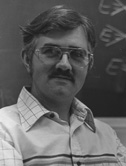
“What is past is prologue.” (Tempest, II, 1)
I am excited – really excited – with the faculty and Department I see today. Our Physics Department has a far better faculty than we have any reason to expect. It is interesting to me to be reminded how today’s Physics Department has come to be what it is.
Along with Bill Butler, I came to Eastern in 1970. At the “request” of my draft board, I joined the Navy and left for about four years. At that time there was a small manufacturing company at the west edge of Charleston called Ducky Boomerang Company which manufactured wooden boomerangs. At a going away party, Bill Butler gave me a Ducky Boomerang with the admonition that “like all good boomerangs” I should return. I did. I rejoined the Physics faculty in 1976 and still have that boomerang hanging in my study at home today. I usually describe my experience in the Navy as being a bureaucrat on Admiral Rickover’s headquarters staff.
In the 70’s a popular Eastern mathematics professor decided to fulfill a dream of interest he had had for a very long time. He had entered college as a Physics major but soon became intrigued with mathematics and pursued that and received his doctorate in mathematics (interestingly, he had even been an advisee of Bill Butler while he was a freshman at Carlton College). Now he wanted to pursue Physics. So he began to take all the Physics courses required of a Physics major -- not simply to audit the courses passively but to attend every lecture, to work all the homework, to take (and “ace”) every exam, and to carry out all the laboratory experiments. By 1980 he had completed six semesters of Physics courses, being the top student in each of those classes. Since our pre-engineering enrollment increased very drastically that year, the mathematics Department graciously allowed him to come over and teach one Physics course each semester that year. This cordial arrangement did not continue, however, for that popular mathematics professor, Jon Laible, was chosen as Dean of the College of Arts and Sciences the following year.
The earliest personal computers – Radio Shack’s TRS-80, the Apple II, and the Atari—appeared in the late seventies. Henry Taitt was an early advocate of their use in education. With a group of interested junior high school students and parents, Henry took over one of our Physics labs and turned it into a computer lab filled with the first TRS-80’s and very excited kids. These efforts finally grew into a full-time job and Henry left the Department to form his own Creative Computing Company. Physics acquired an early Apple II and an early Atari 800 for use with equipment interfacing and Physics education. These early endeavors have grown into a grant from the NSF in 1989 to establish a “Computer-Equipped Introductory Physics Laboratory” for our General Physics courses. When this is completed, students will use computers for data acquisition and analysis in about a third of their General Physics labs. The computers are already being used for calculations in our Modern Physics and Electronics courses. A computer is now a common piece of lab equipment in our advanced experimental courses.
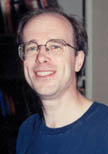
Throughout the seventies and eighties there were several retirements of senior faculty members and the faces at Departmental meetings – and picnics and the Physics Christmas party – began to change. John Gardner, with a PhD from UIUC and industrial experience with Xerox, joined our faculty in the early eighties. John organized Eastern’s first summer “Science Camp” for high schools and extended that to summer workshops on the “Physics of Flight” for high school teachers.

In 1985 Jim Conwell, with an MS from CalTech and a PhD from Nebraska-Lincoln, joined our faculty.
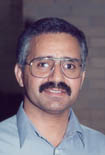
Sirus Aryainejad, with a PhD from Indiana University, joined our faculty the following year.
In 1987 Bill Butler retired – sort of. Bill has continued to teach Physics on a part-time basis and spent last year teaching Physics in the Republic of China. When Bill retired I became Chair of the Department. Also that year Doug Brandt and Keith Andrew joined our faculty. In 1989 Rachelle Bergmann and Jesusa Kinderman joined our faculty.
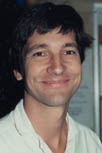
In 1990 Don Pakey, who graduated from Eastern in 1977 and has a PhD from UIUC, joined our faculty.

Steve Daniels, with a PhD in plasma Physics from the University of Maryland, has just joined our faculty this fall (1991). Steve spent the last two years at Swarthmore College coordinating a consortium of nine Physics Departments in their attempts to improve upper division Physics labs. That should be a most useful background for our own Physics program.
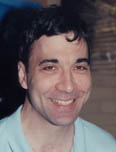
Doug Brandt, with a BS from CalTech and a PhD from Hawaii-Manoa, is a “nuts-and-bolts experimentalist” who is ready for any challenge. Shortly after he arrived, the five Science Departments jointly purchased a Scanning Electron Microscope (SEM) at what we thought was a great bargain of $5,000. Our “bargain” turned out to be junk. Both the electronics and the vacuum system were shot – nothing worked! It would cost $3,000 to have a technician come look at it and repairs would be on top of that. Repair was out of the question! Doug started “tinkering” with it—and fully repaired it. This repair was all the more impressive because extensive modifications had been made to the SEM and it only vaguely resembled the machine described in the manual. Doug is also responsible for most of the work that has been done in our “Computer-Equipped Introductory Physics Lab.”
Doug now has students involved in research on acoustic levitation. This idea was suggested – and demonstrated – by Jim Allen, a 1978 Eastern graduate, who has worked for CalTech’s Jet Propulsion Laboratory (JPL) and is now at Vanderbilt University. Some of Jim’s acoustic experiments have been carried out aboard the Space Shuttle.
With the mention of Jim Allen I must digress for a short story about P. Scott Smith. Jim Allen took Quantum Mechanics from Scott. Scott’s handwriting is legendary (as well as illegible) in the Department. But this particular semester he would often be so excited with the material and his explanations that he would not erase the board but would continue by writing new equations in between the previous equations on the completely filled blackboard. This continued to the point that the class kidded him about it and would regularly ask him to stop so that one of the students would erase the blackboard. The rapport between Scott and this particular class continued to grow despite, or perhaps, because of their regular heckling. “Dr. Smith,” they said one day, “if you continue with this board work, we’re going to throw you in the campus pond!” Then Jim came to me and told me they planned to carry Scott on their shoulders out to the bridge over the campus pond – but not to throw him in. Jim asked me to come along and take photographs of the event. That sounded like great fun. Of course Scott’s writing on the board was even worse the next day so they picked him up and out they went toward the campus pond as I followed along with a camera. On the way, though, it occurred to me that they might really toss Scott into the pond. What would I do then – taking pictures as an accomplice. I decided the only thing I could do was to jump into the pond along with my friend. Fortunately, for both of us, they set Scott down on the bridge.
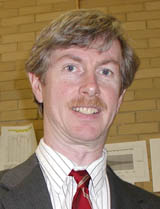
Keith Andrew, with a PhD from Arkansas, has a very interesting background. In 1980 he was competing for a spot on the USA’s Olympic bicycle racing team when the Soviet Union invaded Afghanistan and the US boycotted the Olympic Games in Moscow. His interests extend from the structure of nucleons with attention to gluons to the structure of the Universe with attention to General Relativity. He now has students involved with research using the Cray supercomputers at the National Center for Supercomputing Applications (NCSA). He has also brought new life (and light) to our Optics course.
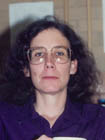
Rachelle Bergmann, with a PhD from Cal (The University of California at Berkeley) and a post-doc at the Department of Space Physics and Astronomy at Rice University, continued with “frontiers of Physics” research on plasmas in Earth’s magnetosphere. This past summer she taught and consulted at MIT’s Theoretical Institute for Geo/Cosmo Plasma Theory. She, too, has students working on projects using resources at NCSA.
Jesusa Kinderman, with a PhD from Minnesota and faculty experience at Carnegie-Mellon and UCLA, has an interest in Physics education. She is presently involved in the NSF-supported Introductory University Physics Project which is helping to determine the Introductory Physics course curriculum for the twenty-first century. She is also developing computer investigations to go along with our new Modern Physics course.
Mathematica is more than just a new and interesting mathematics program for computers;Mathematica’sdeveloper Steven Wolfram describes Mathematica as doing for mathematics what calculators have done for arithmetic. Jim Conwell has become an avid Mathematica user – using it in his own research in General Relativity and also bringing it into his lectures. Jim is teaching our Electricity and Magnetism courses and usesMathematica to help his students visualize some of the complicated functions they encounter there. Keith Andrew also uses it in his research on the behavior of light around black holes. Doug Brandt attended aMathematica workshop in California recently and is excited with it.
The Physics faculty includes several authors who may affect students and the teaching of Physics well beyond our own classrooms. A Classical Mechanics textbook, which I wrote, was published in 1986. Doug Brandt, Keith Andrew, and Len Storm wrote a study guide to accompany a new calculus-based General Physics text by Doug Giancoli. That same crew are now working on another study guide to accompany an algebra-basedCollege Physics text that I am struggling to find the time to finish. Doug Brandt and I are involved with a consortium of international Physics authors writing computer simulations for upper level Physics.
Our MS in Ed program for high school Physics and chemistry teachers continues to thrive. We have twelve to fifteen high school teachers in our Physics courses each summer (and a comparable number in chemistry courses). Some are well-experienced Physics teachers and others are teachers who have little or no experience with Physics.
I have already mentioned John Gardner’s interest in and experience with high school teachers. John will be on sabbatical next year, looking into teaching middle school science. He expects to return with ideas for summer workshops for middle school teachers.
In recent years we have added elective courses in Advanced Classical Mechanics, Solid State Physics, and two new Modern Physics courses. Recently we have taught special topics courses in Computational Physics, Superconductivity, General Relativity, and Plasma Physics. Our students continue to be in demand by graduate schools and industry. We supply about twenty percent of the new high school Physics teachers I Illinois.
Years ago Bill Butler and I developed a “Physics Road Show” that we presented to junior high and senior high schools and others in the area (he and I still smile when we think of our sweaty palms and intense stage fright at our very first presentation to twenty people at the Oblong Community Center). Our Road Show uses most of the demonstration equipment that can be seen well by a large audience. We try to show people that Physics is involved with many of the common, everyday things around them – like how colors are made on a color TV, that we live at the bottom of an ocean of air with great air pressure all around us, that the idea of resonance explains many things from how children swing on a playground swing to why the sky is blue or how guitars and pianos are tuned. We sometimes tell our audiences that people go into Physics because it is a socially acceptable way for adults to continue to play with toys.
In more recent years our Road Show has been presented by several newer faculty, specifically, Keith Andrew, Doug Brandt, and Jim Conwell. Even more recently, some of our students have become interested in this and have presented the Physics Road Show at a community festival in Flora, IL and several times on campus.
Only Snowden Eisenhour, Marv Breig, and Charles Miller remain of the Physics faculty who were here when I came in 1970. Snowden plans to retire next year. You have already heard of Marv’s work as Chairman of pre-engineering. Charles continued to wear many hats – Physics Department Business Manager, Laboratory Administrator and Supervisor, and Equipment Technician. He now handles weekly labs for twice as many introductory courses as when he first came in 1967. He is probably the only one of our faculty who is truly irreplaceable.
Leon Lederman, former director of FermiLab and recent Nobel laureate, has said he went into Physics because of the interesting people it allowed him to associate with. That is true of Eastern’s Physics Department as well. Both our faculty and our students make this a very interesting place to be.
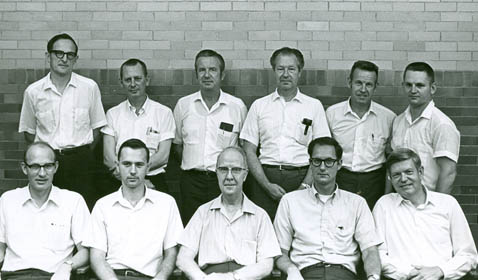
The Eastern Illinois Physics Department in the late 1960's.